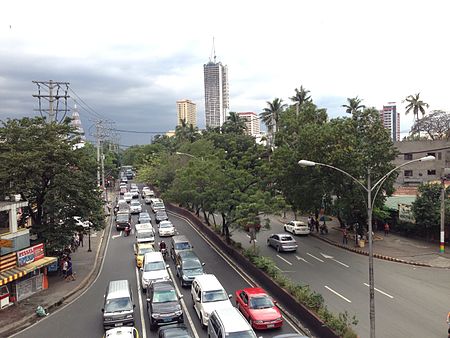Quirino Avenue
Malate, ManilaPaco, ManilaPandacanStreets in ManilaUse Philippine English from March 2023 ... and 1 more
Use mdy dates from March 2023

President Elpidio Quirino Avenue, more commonly known as Quirino Avenue, is a 6-10 lane divided highway in Manila, Philippines. It runs for 3.6 kilometers (2.2 mi) in a northeast–southwest direction from Nagtahan Bridge (now Mabini Bridge) across from Santa Mesa in the north to Roxas Boulevard in Malate in the south. It passes through Paco and Pandacan districts where it also serves as a truck route between Port Area and South Luzon Expressway. North of Nagtahan Bridge, the road continues as Nagtahan Street. It is designated as part of Circumferential Road 2.
Excerpt from the Wikipedia article Quirino Avenue (License: CC BY-SA 3.0, Authors, Images).Quirino Avenue
President Quirino Avenue, Manila Paco (Fifth District)
Geographical coordinates (GPS) Address Nearby Places Show on map
Geographical coordinates (GPS)
| Latitude | Longitude |
|---|---|
| N 14.575833333333 ° | E 120.99611111111 ° |
Address
President Quirino Avenue
1007 Manila, Paco (Fifth District)
Philippines
Open on Google Maps








